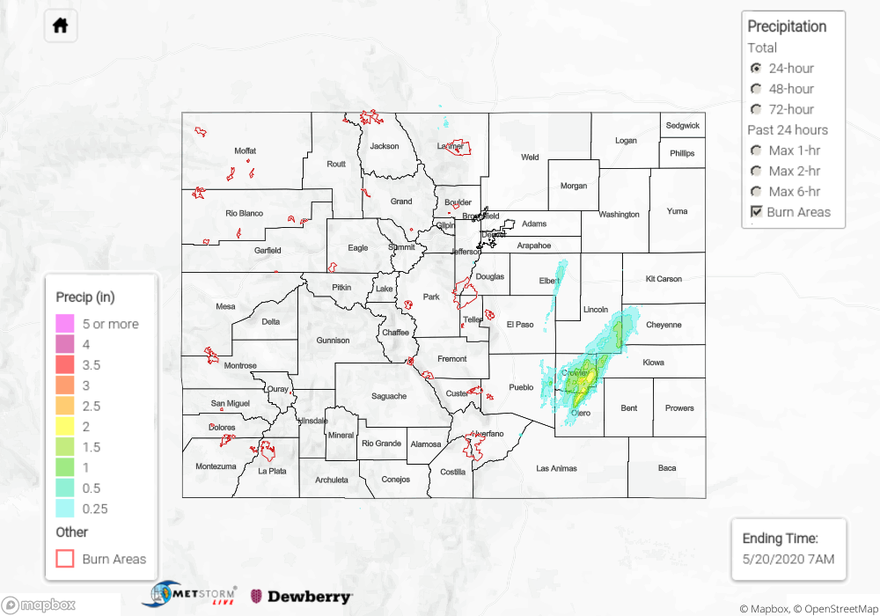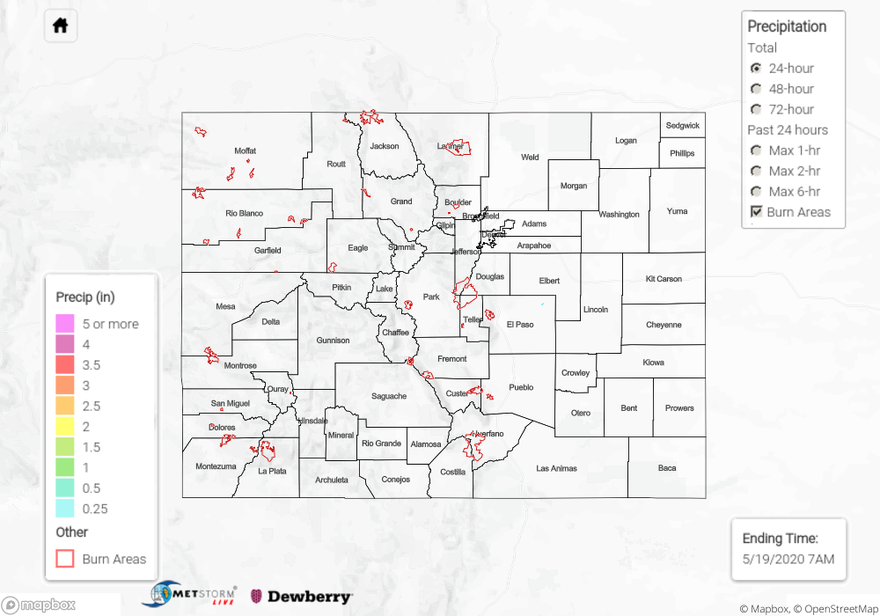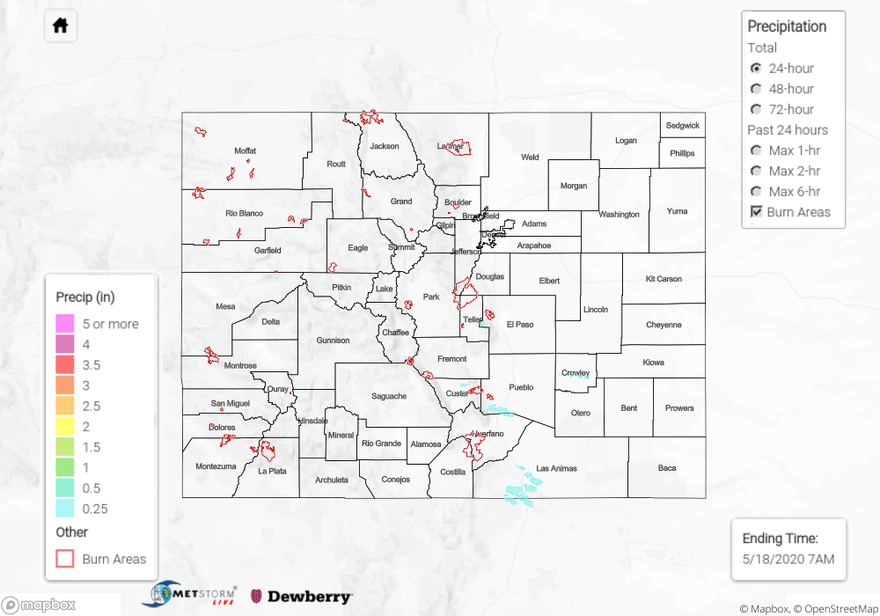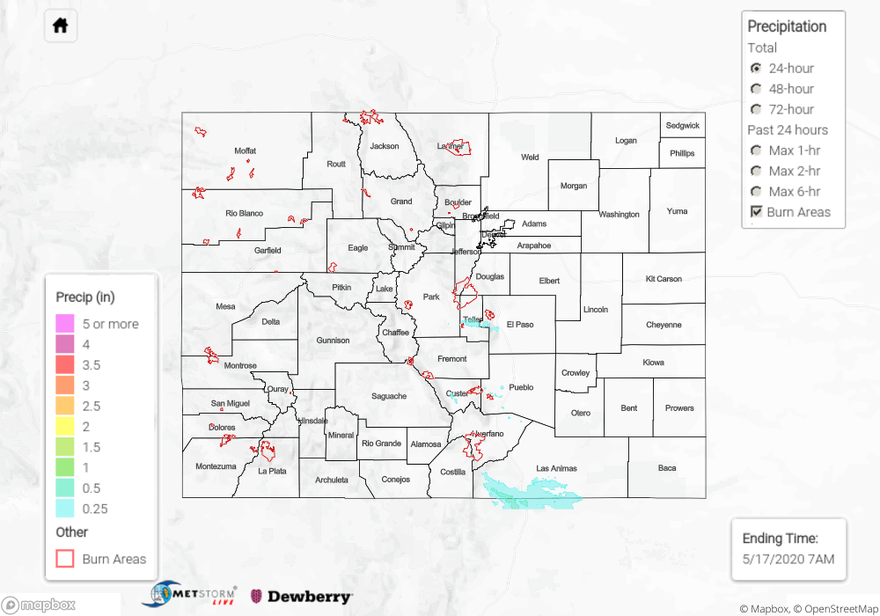Issue Date: Wednesday, May 20th, 2020
Issue Time: 10AM MDT
Summary:
Winds picked up yesterday as the Low started to move west with gusts between 45 and 60 mph recorded across the state. A 68 mph gust was recorded at 3:10PM at Durango’s airport! It was another hot one with highs on par or slightly above Monday. Alamosa beat its daily record for a 3rd day in a row, but it’s not looking likely that record will be beat again this afternoon. Temperatures will be cooling down quite a bit tomorrow and a few degrees today, so it looks like this record breaking heat wave will (thankfully) come to an end.
A weak northward surge of moisture helped bring showers and thunderstorms back into the forecast for eastern CO. Storms over the mountains produced more wind than wetting rainfall. Totals were highest near the Continental Divide in the Northern Mountains where up to 0.5 inches fell. Some severe storms popped up over the Southeast Plains just after 4PM and hung around through 11PM. The nearly stationary storms (that formed on a line of convergence) produced totals around 2-2.5 inches in Crowley County. The Rocky Ford CO agriculture gage showed 1.02 inches for the 24-hour period, and CoCoRaHs in town had just under 1.5 inches. There may have been some hail contamination with some of the gages, but overall, some very much needed and impressive rainfall! Flooding was not reported with these storms as of the time of this posting, but a Flash Flood Warning was issued at 8:45PM.
For precipitation estimates in your area over the last 24-hours, scroll down to the State Precipitation Map below.
Click Here For Map Overview



